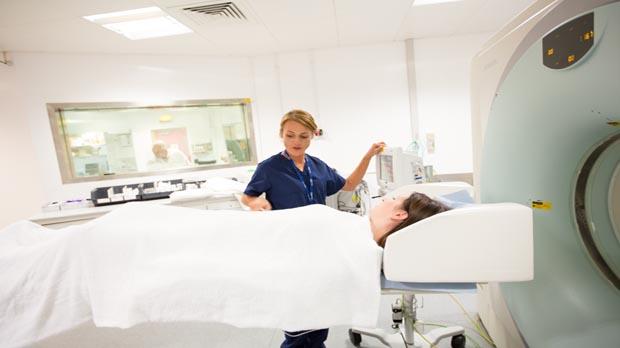
Around 1 in 5 people diagnosed with cancer in the UK take part in a clinical trial.
This trial was to see if adding rituximab (Mabthera) to fludarabine, cyclophosphamide and mitoxantrone chemotherapy helped to improve treatment outcome for chronic lymphocytic leukaemia.
Doctors often treat chronic lymphocytic leukaemia (CLL) with chemotherapy. But unfortunately it doesn't always work very well, and the CLL begins to grow again.
Fludarabine, cyclophosphamide and mitoxantrone are chemotherapy drugs used to treat CLL that has come back. Doctors thought that giving a monoclonal antibody called rituximab (Mabthera) as well as chemotherapy may be useful. But they didn’t know how well this combination of treatment would work for CLL.
This trial looked at fludarabine, cyclophosphamide, and mitoxantrone with or without rituximab. The aim of the trial was to see which combination of treatment was better for CLL that had either not responded to treatment, or had come back after treatment.
The trial team found that adding rituximab to fludarabine, cyclophosphamide and mitoxantrone increased the number of people who had a  to treatment.
to treatment.
This phase 2 trial recruited 52 people. They were put into 2 groups by a computer. This is called  .
.
When the researchers looked at the number of people whose CLL had gone away (complete response), they found it was
Even when leukaemia responds to treatment, very small numbers of leukaemia cells can be left behind. Doctors call this minimal residual disease (MRD). The researchers looked at the number of people who did not have any minimal residual disease 2 months after treatment. They found this was
The trial team concluded that adding rituximab to fludarabine, cyclophosphamide and mitoxantrone improved the response rate without causing any extra side effects. They suggest this should be looked at in larger trials.
We have based this summary on information from the team who ran the trial. The information they sent us has been reviewed by independent specialists ( ) and published in a medical journal. The figures we quote above were provided by the trial team. We have not analysed the data ourselves.
) and published in a medical journal. The figures we quote above were provided by the trial team. We have not analysed the data ourselves.
Please note: In order to join a trial you will need to discuss it with your doctor, unless otherwise specified.
Professor Peter Hillmen
Cancer Research UK
Experimental Cancer Medicine Centre (ECMC)
National Institute for Health Research Cancer Research Network (NCRN)
Roche
The Leeds Teaching Hospitals NHS Trust
This is Cancer Research UK trial number CRUKE/04/018.
If you have questions about the trial please contact our cancer information nurses
Freephone 0808 800 4040

Around 1 in 5 people diagnosed with cancer in the UK take part in a clinical trial.